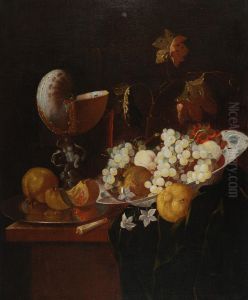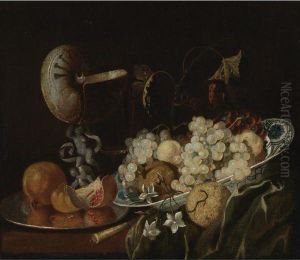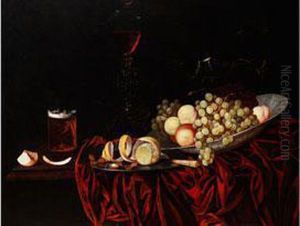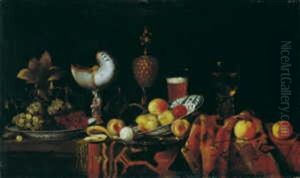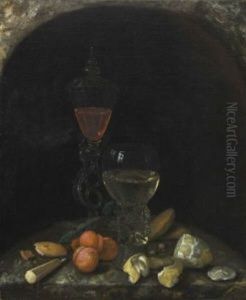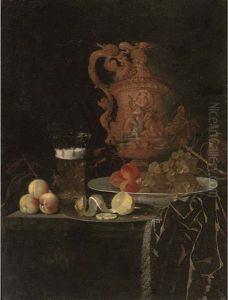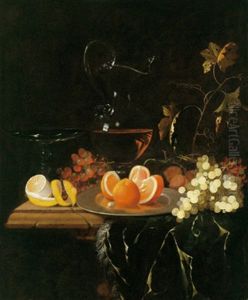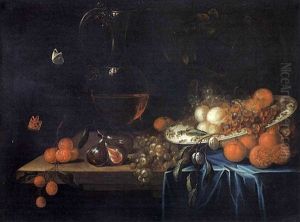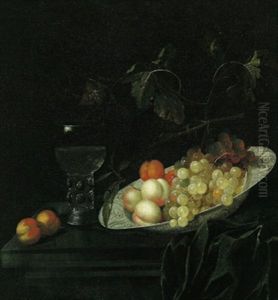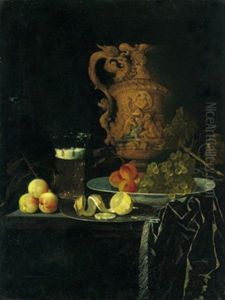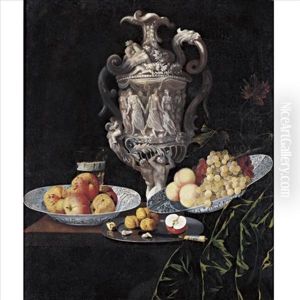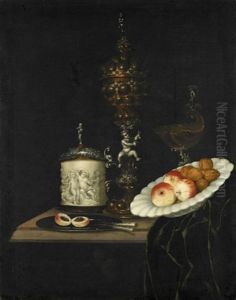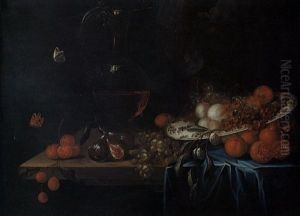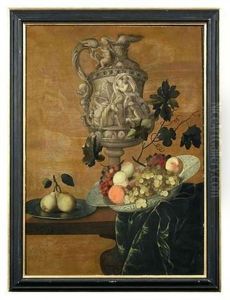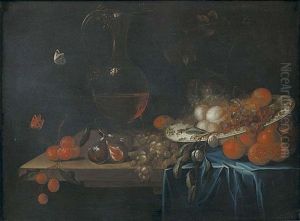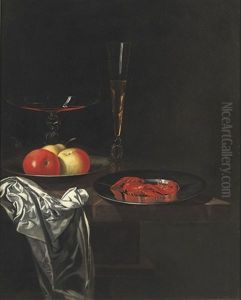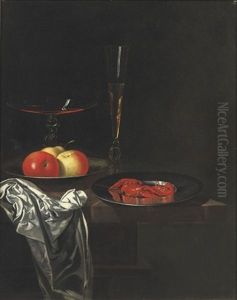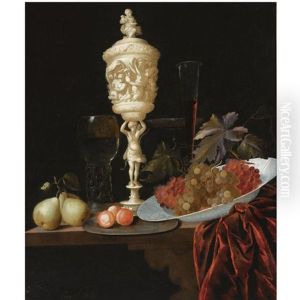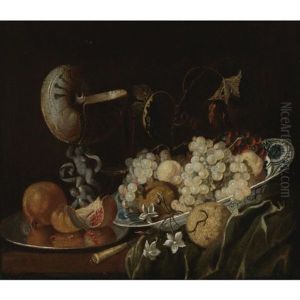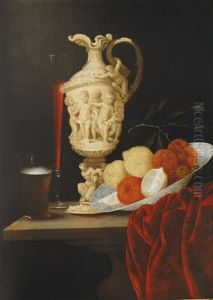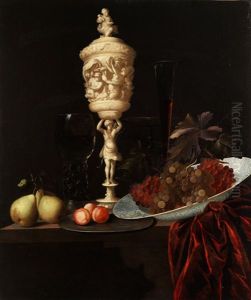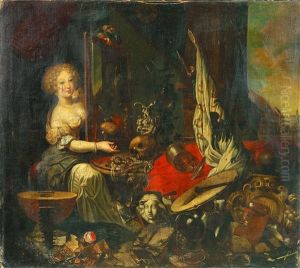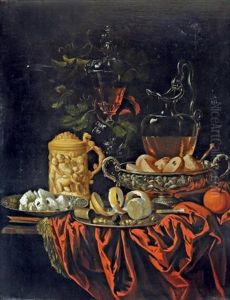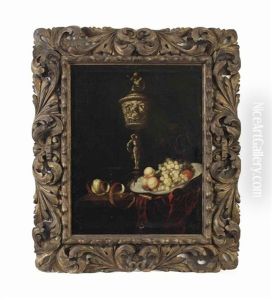Georg Hainz Paintings
Georg Hainz was a German painter born in Hamburg in 1630. He is primarily known for his work as a still life artist, which was a popular genre in Northern European art during the 17th century. Hainz's paintings typically featured arrangements of objects like flowers, fruit, and shells, as well as man-made objects like glassware and musical instruments. These compositions were celebrated for their meticulous detail, rich colors, and the skillful play of light and shadow.
Hainz's work was influenced by the Dutch still life tradition, which was at its peak during the same period. He was particularly inspired by artists such as Jan Davidsz. de Heem and Willem Claeszoon Heda, whose works were characterized by their opulence and the depiction of textures. Hainz adopted these characteristics and combined them with his own artistic sensibility to create still lifes that were both vibrant and realistic.
Despite the popularity of still life painting at the time, not much is known about Hainz's life. He spent most of his career in Hamburg, which was a significant center for art and trade in the 17th century. This provided him with an environment rich in the objects that would become the subjects of his paintings. Hainz's still lifes not only reflect the wealth and abundance of the merchant class but also the interest in collecting exotic and rare items that was prevalent among the affluent society of his day.
Hainz passed away in 1708 in Hamburg. Although he is not as widely known today as some of his contemporaries, his work is an important part of the still life genre and provides valuable insight into the cultural and artistic interests of Northern Europe during the Baroque period. His paintings can be found in various museum collections, where they continue to be studied and appreciated for their beauty and historical significance.
